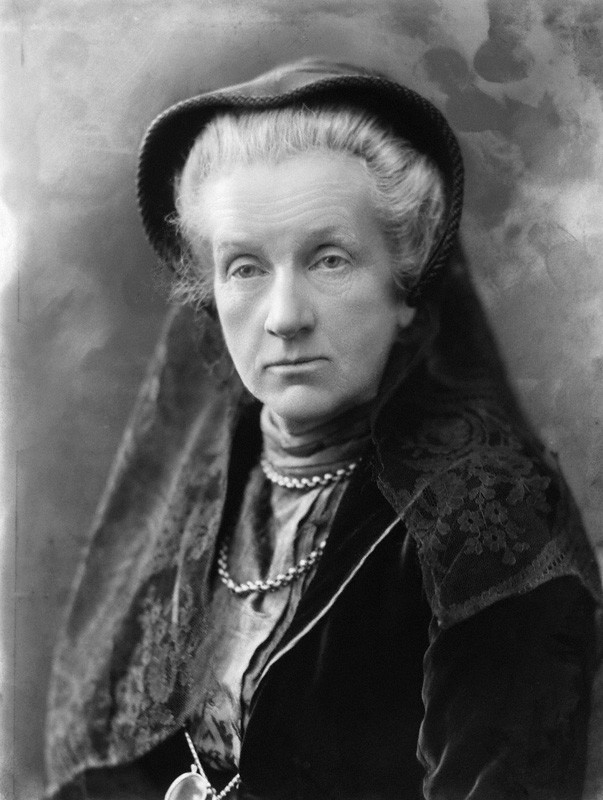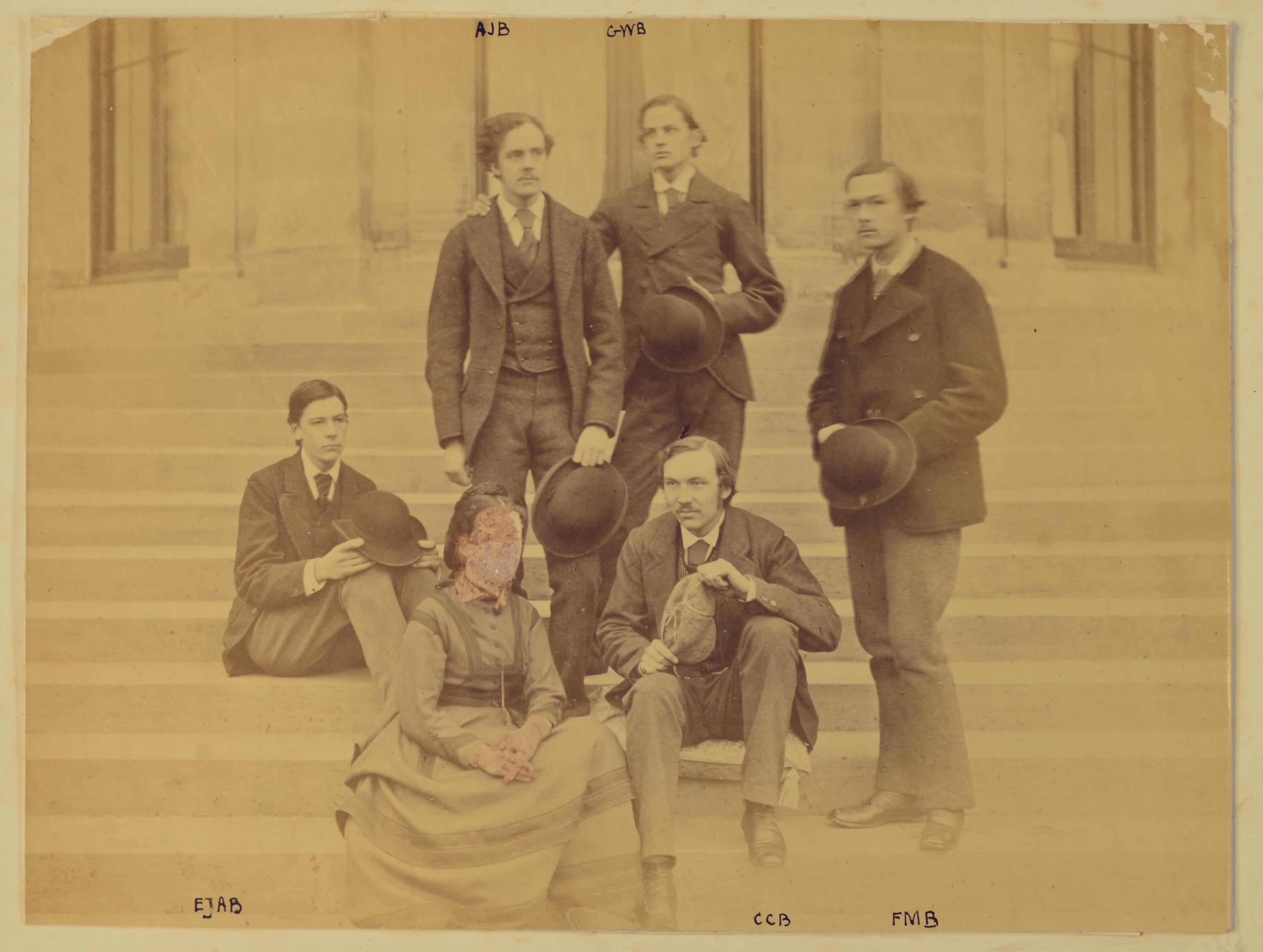Lady Frances Balfour (1858 - 1931)

Lady Frances Balfour was an ardent speaker and promoter of the rights of women throughout her lifetime. She worked for the Women's Liberal Unionist Association in the late 1880s, went on to serve on the executive committee of the National Union for Women's Suffrage Society (NUWSS) from its inception in 1897 until 1918, and became the president of the London Society for Women's Suffrage from 1896 to 1919, to name only a few roles Frances undertook in pursuit of women's rights.
Born on 22 February 1858 at Argyll Lodge, Kensington, London, Frances was the tenth of twelve children to George Douglas Campbell, eighth Duke of Argyll (1823-1900), and his first wife, Lady Elizabeth Georgiana Leveson-Gower (1824-1878), the eldest daughter of the second Duke of Sutherland. Formerly educated by a governess, Frances benefited from her family's connections and likely learned more about politics from conversations with her parents, in-laws and family friends, including politicians and ministers.
On 12 May 1879, Lady Frances Campbell married Eustace James Anthony Balfour (1854-1911), the youngest brother of Arthur James Balfour, who would become Prime Minister. The couple went on to have five children.

Coming from an aristocratic family, Lady Frances Balfour was unusual for her open and active participation in the pursuit of women's suffrage. Beginning in the 1880s, Balfour became a regular orator on the issue, speaking on average three times a week for women's suffrage at the peak of the campaign. She was a suffragist, that is, a constitutional campaigner for the cause, rather than a suffragette, who campaigned using militant means.
In the National Records of Scotland's (NRS) archives we hold the Papers of the Balfour Family of Whittingehame (GD433), including copy letters from Frances to her sister-in-law, and close-friend, Lady Elizabeth Edith (Betty) Bafour, as well as Frances' diaries. The letters span some 40 years of friendship between the two women, and the diaries record key events and the thoughts of Frances throughout her lifetime.
These records reveal Frances' participation in suffrage meetings and, what are now considered, some of the key events in the pursuit of women's suffrage. These include her engagement in the peaceful NUWSS United Procession of Women of 1907 - more commonly known as the 'Mud March' - in which 40 suffragist societies and over 3,000 women marched from Hyde Park to Exeter Hall, near The Strand.
It also reveals her perception of both peaceful and militant protests, and the actions of the Government in response. Although many suffragists were outspoken in their disapproval of militancy, suffragists and suffragettes often collaborated. She expressed her mixed feelings: "I don't know whether I like the policy, but I do admire the courage & resource of the women" (GD433/2/337 page 32).
One of the most touching of these examples, is Lady Frances Balfour's diary entry of 14 December 1918, which includes 'My first vote!!', at the age of 60.
After some women had secured the vote, Frances continued to pursue equality of the sexes through the National Council of Women of Great Britain (prior to 1917, known as the National Union of Women Workers). She became a member of the executive committee in 1917 and was elevated to the presidency in 1921. Retiring in 1923, she continued as one of the organisation's vice-presidents until her death in 1931. The records we hold suggest that Frances was an effective and influential speaker that could capture the imagination of her audience; she was also very well-connected in British politics. Although her work in this area was less publicised, from the records of the Balfour papers it is possible to glean the ways in which Frances spoke to and lobbied different members of parliament on behalf of her special cause.
To explore Frances' pursuit of female enfranchisement and rights, a curated selection of records is available to view here. The full records are available and accessible via the National Records of Scotland's Historical Search Room.
Lady Frances Balfour passed away in her London home, 32 Addison Road, Kensington, on 25 February 1931. She was buried at Whittingehame, the Balfour family home in East Lothian.
This is but a limited overview of Frances Balfour’s many activities and achievements. For further information about her life, please refer to the resources listed below.
Further Reading
Oxford Dictionary of National Biography, Lady Frances Balfour (nee Campbell) (Subscription or UK public library membership required).
Lady Frances: Frances Balfour, Aristocrat Suffragist. Joan B. Huffman, 2018
The History of Parliament: British Political, Social & Local History. Lady Frances Balfour: A Woman in Parliament before Enfranchisement - The History of Parliament (wordpress.com)
